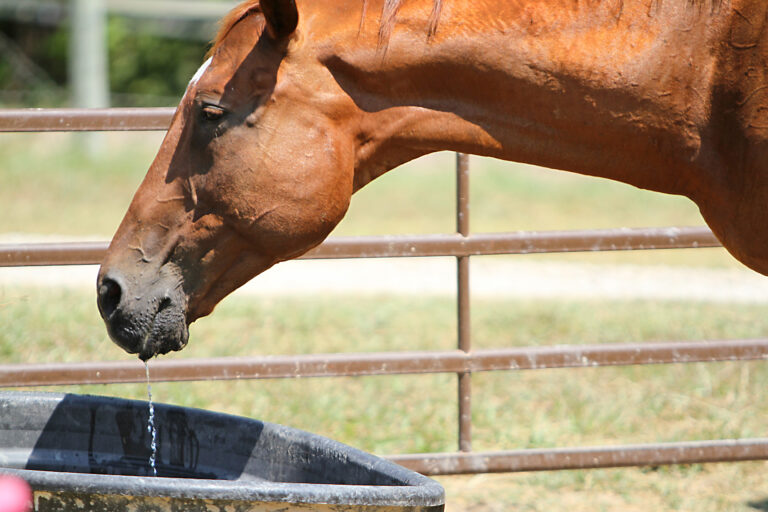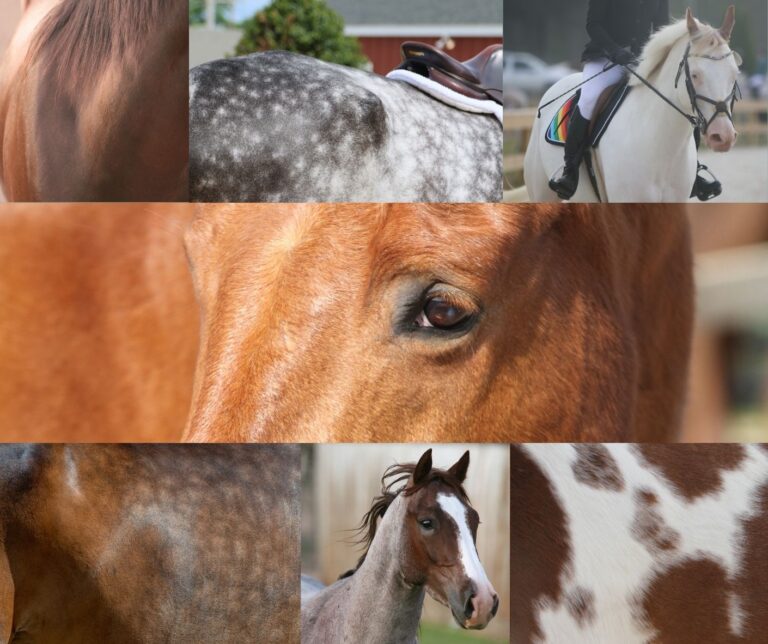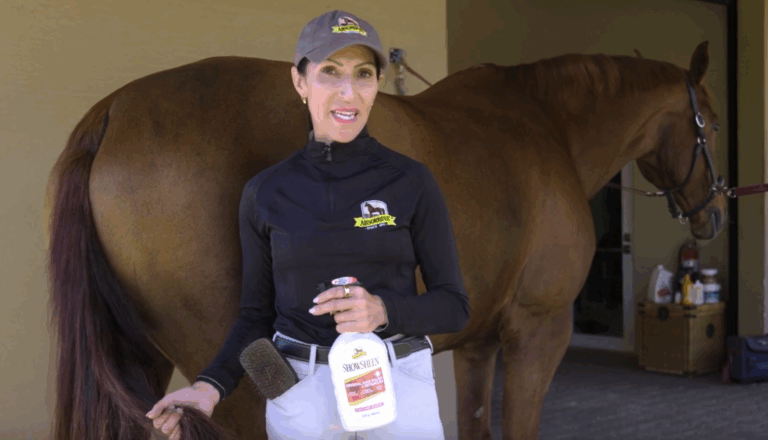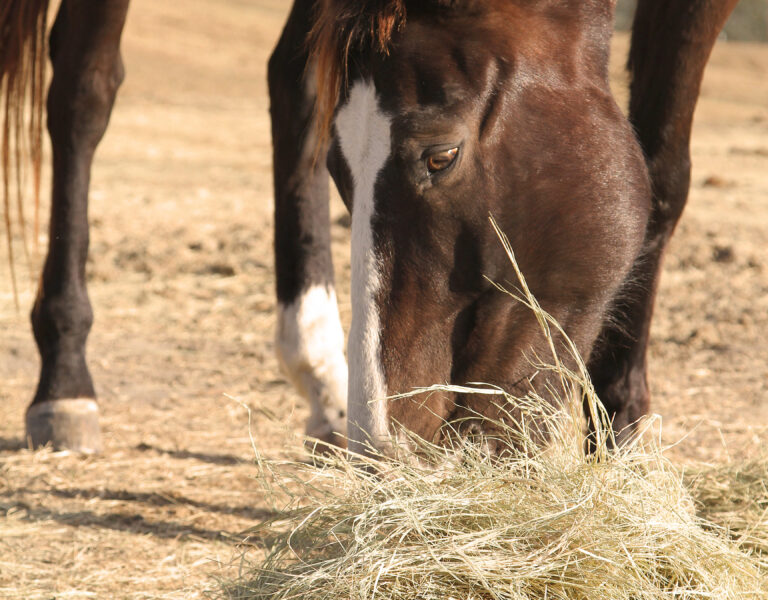Your horse used to scour his feed bucket clean at every meal, but now he picks at his grain. He’s dropped a little weight, too. He acts resentful when you tack him up and he’s sluggish when you ride. What’s his problem?
While any number of issues could cause those worrisome signs, stomach ulcers are high on the list. Stomach (gastric) ulcers are surprisingly common in horses and they’ve been linked to everything from poor performance to colic. But a better understanding of how and why horses get ulcers has brought advances in treating and managing the problem. In this article, Frank Andrews, DVM, MS, DAVIM, helps bring you up to date. A leading equine-ulcer researcher, Dr. Andrews is a professor and director of the Equine Health Studies Program at Louisiana State University’s School of Veterinary Medicine and serves on the Equine Committee of the Louisiana Veterinary Medical Association.
The stomach isn’t the only part of the horse’s digestive system that can develop ulcers. Hindgut (or colonic) ulcers are less common than gastric ulcers, Dr. Andrews says, but they can cause serious problems.

© Amy K. Dragoo
Acid Attack
Gastric ulcers are sores in the lining of the stomach. In horses they were a hidden problem—quite literally—before the late 1980s, when development of the gastric endoscope allowed veterinarians to peer directly into the stomach. The scope revealed that gastric ulcers are much more common in horses than in humans, affecting up to 90 percent of racehorses and more than half of sporthorses.
Equine ulcers differ from human ulcers in several important ways. Infection with Helicobacter bacteria often triggers gastric ulcers in people, but so far there’s no evidence of this in horses, Dr. Andrews says. Instead, lifestyle seems to be a major factor. The routines and feeding regimens you impose on your horse can conflict with the way his digestive system works.
Here’s why: Your horse is a grazer, and his digestive system is built to handle a steady intake of forage. His stomach constantly produces acidic digestive juices—more than six cups an hour. Chewed forage arrives in the stomach mixed with saliva, which contains acid-buffering bicarbonates. As long as he’s grazing, his intake soaks up the juices and keeps acid levels in check.
Your stomach, in contrast, is a batch processor—acid production ramps up at mealtime and falls off in between. Your stomach also has a protective mucous lining called the glandular mucosa, which shields it from acids. Your horse has that type of lining only in the lower part of his stomach, while the lining in the upper (squamous or nonglandular) part is not so well protected. About 80 percent of gastric ulcers in adult horses occur in this upper region and exposure to acid is the main cause.
Who’s at Risk?
Horses of any age and any breed can develop ulcers, Dr. Andrews says, but some horses are more likely than others to be plagued by this problem. Answering six questions will help you assess your horse’s risk:
How much time does he spend at pasture? The less access a horse has to pasture, the more likely he is to develop gastric ulcers. That’s because his system isn’t designed for an intermittent feeding schedule and his stomach acid levels rise quickly without a steady intake of forage and acid-buffering saliva.
How hard—and how often—does he work? There’s a direct link between exercise levels and risk of gastric ulcers. This may be partly because the stomach is compressed during exercise, so acidic juices are more likely to contact the unprotected upper walls. Researchers have also found that stomach acidity increases when horses run on a treadmill. This helps explain why horses in racing and high-level training face the highest ulcer risks.
What’s in his bucket? High-starch grains and concentrates like sweet feed may increase stomach acidity. These feeds contain soluble carbohydrates that are converted to simple sugars. Bacteria normally present in the stomach ferment these sugars and produce volatile fatty acids (VFAs) and other byproducts that can work with stomach acids to damage the stomach lining. Adding to the problem, a horse that gets big rations of concentrates is less likely to nibble forage between feedings.
What’s in his medicine chest? Nonsteroidal anti-inflammatory drugs (NSAIDs) such as phenylbutazone (bute) and flunixin megulamine (Banamine®) can contribute to ulcers, generally when they’re given at high doses or over a long time. NSAIDs work by inhibiting a group of body chemicals, prostaglandins. Some prostaglandins are involved in inflammation, but others help protect the stomach lining by inhibiting acid production and encouraging production of protective mucus. If those “good” prostaglandins are blocked, ulcer risk increases. In particular, Dr. Andrews says, these drugs have been linked to ulcers in the normally protected glandular mucosa.
What’s his travel schedule? Shipping increases the likelihood and severity of gastric ulcers. Several factors may be involved, including the stress of transport and the fact that horses consume less water and feed on the road.
Stress makes gastric ulcers more likely. Horses can be stressed by illness, pain, training demands, shipping and sources you may not be aware of. For many horses daily life is stressful, although it may not seem that way to you. Horses evolved living in herds, constantly grazing and moving freely from place to place. Stress from confinement and lack of social contact with other horses may help explain why horses that are stalled are more likely to develop ulcers than horses at pasture. Some horses handle these stresses better than others, so temperament is also a factor.
What You’ll See
How will you know if your horse develops gastric ulcers? The signs can be frustratingly vague and they vary from horse to horse. You may notice:
- He loses his appetite. He eats slowly and leaves food in the bottom of his bucket.
- He loses weight and suddenly develops a poor coat.
- He spends more time lying down.
- He stretches often to urinate, a possible sign of gastric discomfort.
- He colics. Recurrent colic, mild or severe, is common with gastric ulcers.
- His manner changes. He develops a sour attitude in work or seems dull and lethargic.
- His performance level slips.
All these signs can be produced by other problems and many of them are subtle. In fact, a horse with a high tolerance for pain may show few signs. So how can you find out for certain if your horse has gastric ulcers? Gastroscopy—an endoscopic exam—is the only way. This procedure may require a trip to a clinic that has the flexible 3-meter fiberoptic scope used for the exam, Dr. Andrews says, although some veterinarians have portable units for on-farm use. The veterinarian inserts the scope into the horse’s nostril, down his esophagus and into the stomach. If ulcers are present, their severity can be rated on a standard scale. That will give the vet a point of reference for follow-up exams.
The good news is that ulcers are usually treatable. Medication and management are the keys.
Medication
The ulcer medications most used for horses work by blocking production of stomach acids, giving the ulcers a chance to heal. Omeprazole, the active ingredient in GastroGard® for horses and Prilosec for people, is the drug of choice, Dr. Andrews says. It’s a proton-pump inhibitor, meaning that it blocks the mechanism through which the stomach produces acid. It’s given once a day in an oral paste, at a dosage rate of 4 milligrams per kilogram, for up to four weeks.
GastroGard is currently the only drug approved by the U.S. Food and Drug Administration for treating ulcers in horses. But it’s expensive—a month’s treatment for a full-size horse can cost more than $1,000. Generic versions have come on the market, but as of this writing none has FDA approval. Last year the FDA cracked down on nine firms marketing “unlicensed and adulterated” omeprazole products for horses. Some of the products contained far less omeprazole than the amount listed on their labels.
Ranitidine (Zantac® in human medicine) blocks the action of histamine, a body chemical that stimulates acid production in the stomach. Dosage varies with the case, but as you might suppose a horse needs significantly more than you do. Ranitidine is usually given three times a day for three to four weeks. The cost is typically about half the cost of treatment with GastroGard, but the effects vary from horse to horse, Dr. Andrews says. He adds that another histamine blocker, cimetidine (Tagament®), has not proved effective in treating ulcers in horses, so it’s not recommended.
What about over-the-counter antacids such as magnesium hydroxide, aluminum hydroxide (Maalox®) and calcium carbonate? These drugs neutralize rather than suppress stomach acid. They can help, but they’re not widely used in horses for practical reasons. It takes about a cupful of an extra-strength oral antacid (such as Maalox Therapeutic Strength®) to lower a horse’s stomach acid for a few hours, researchers have found, and that massive dose would have to be given four times a day to combat ulcers. Good luck getting the horse to cooperate.
Acid-blocking drugs are effective for the most common ulcers—those in the upper, nonglandular stomach wall. Ulcers that develop in the mucous lining of the lower stomach respond to a different drug, sucralfate. This drug binds to the lining, acting like a bandage at the ulcer site and enhancing mucus production. The drug also has some antibacterial properties.
Since bacteria aren’t known to cause ulcers in horses, antibiotics aren’t a standard part of treatment. However, antibiotics can help in some cases, Dr. Andrews says. Bacteria are naturally present in the horse’s stomach. When ulcers form, harmful bacteria (other than the Helicobacter species that cause ulcers in people) may colonize the sores and interfere with healing. Combining antibiotic and antacid treatment sometimes helps these horses, who tend to have recurring ulcer problems. Boosting beneficial bacteria with probiotics, especially products containing Lactobacillus, may also help. Lactobacillus bacteria may be able to replace the harmful bacteria that colonize ulcers and stimulate healing.
Management
Because a horse’s lifestyle plays such a big role in triggering ulcers, management is vital in dealing with the problem. Simple changes in your horse’s diet and routine can improve healing. Remembering to make any feed changes gradually, give him:
- More forage. Maximize grazing time, and feed free-choice hay when your horse isn’t on grass. Keeping some forage in his stomach will lower the risk that stomach acids will injure the stomach lining.
- Alfalfa. Alfalfa hay is especially good at buffering acid, Dr. Andrews says. The effects are released slowly as the hay is digested, lasting up to five hours. Free-choice alfalfa would be too rich, but offering some alfalfa or a grass–alfalfa mix as part of his total ration, in evenly spaced feedings, could help keep acid levels in check.
- Less grain. Feed concentrates only to provide calories that the horse can’t get from hay. Divide his grain ration into three or four small feedings a day, spaced at least five hours apart, to avoid high levels of volatile fatty acids.
- A little fat. If he’s getting sweet feed or a similar feed that’s high in soluble carbohydrates, switch to a high-fat complete feed. Or use a commercial complete feed plus a fat supplement to provide calories with less stomach acidity.
- More downtime. Time off, or at least cutting back on exercise and training, will give the ulcers a chance to heal. Avoid shipping and other stresses and increase turnout time.
- No NSAIDs. Avoiding these drugs will help the ulcers heal. If your horse needs anti-inflammatory medication, talk to your vet about other choices.
Maintenance
Ulcers tend to recur, especially when contributing factors (like stress from training, transport and showing) remain part of the horse’s life. Making the feed and lifestyle changes listed permanent will help keep them away. Still, some horses may benefit from preventive medication or supplements even after their ulcers heal.
Daily omeprazole at one-fourth of the treatment dose is effective for this, Dr. Andrews says. (A low-dose version of GastroGard is sold as UlcerGard® for preventive use; the medication in the tubes is the same strength, but the dose markings are different.) “We don’t know of any negative long-term effects” of continued administration, Dr. Andrews says. However, studies haven’t looked at administration for periods longer than 90 days. Daily doses for shorter periods at stressful times—before, during and after
a show, for example—might help prevent a relapse, but that also hasn’t been studied.
Many feed supplements claim to promote gastric health and alleviate or prevent ulcers in horses, but only few have research to back up the claims. Researchers at LSU found that a supplement containing a blend of stomach-coating ingredients (pectin, lecithin, beta-glucan) and acid-buffering ingredients (sodium bicarbonate, alfalfa meal) failed to prevent ulcers but did reduce the severity of the lesions after 35 days of treatment. Another LSU study found that a supplement containing a proprietary blend of sea buckthorn, glutamine, aloe vera, pectin and lecithin helps keep ulcers at bay after treatment with GastroGard.
“Ulcers should be treated with Gastro- Gard first and then the horse can be evaluated for the best preventive measures,” Dr. Andrews says.
Hindgut Ulcers
Hindgut ulcers—lesions that develop in the large colon—can have a big impact on your horse’s health. They’re less common than gastric ulcers, but they’re trickier to diagnose and treat.
Any horse can get hindgut ulcers, but certain factors increase the risk:
- ong-term treatment with NSAIDs (especially phenybutazone). This is probably the most common trigger.
- stress
- dehydration
- for broodmares, an intensive breeding or pregnancy schedule or a postpartum uterine infection.
As with gastric ulcers, the signs are often vague. You may see intermittent colic or diarrhea, lack of appetite or dramatic weight loss, a dull coat, lethargy or swelling (edema). The swelling occurs as proteins leak from blood through the horse’s inflamed gut wall. Some of these proteins help maintain the balance of fluids in blood, and their loss allows fluid to seep from the blood vessels into surrounding tissues. Fluid buildup then creates swelling under the horse’s skin, in the legs and even around the lungs.
There are no definitive tests for hindgut ulcers, but these can provide clues:
- Blood tests may show low protein concentrations (especially low levels of albumin) and sometimes other abnormalities, such as anemia.
- An ultrasound scan of the right dorsal colon may reveal thickening and swelling due to inflammation.
- Fecal tests can reveal occult blood, which could be a sign of gastric or colonic ulcers. However, a negative test doesn’t rule out either condition.
- Gastroscopy can be done to detect gastric ulcers, which often produce similar signs. A horse may have both types of ulcers at the same time.
The first step in treatment is to remove the cause. Stop NSAIDs, back off intensive training and other sources of stress and provide plenty of clean water at all times as well as a free-choice mineral/salt mix, to ensure that the horse stays hydrated.
Acid-blocking drugs like omeprazole are not as helpful for hindgut ulcers as they are for gastric ulcers, but your veterinarian may suggest other medications. For example, sucralfate can coat the gut wall, giving colonic ulcers a chance to heal.
Synthetic prostaglandins such as misoprostol (Cytotec®) may be helpful, Dr. Frank Andrews says. “Colonic ulcers might be caused by a depletion or blockade [through stress or the use of NSAIDs] of the good prostaglandins which help protect the colon,” he explains. Misoprostol has been shown to help dogs and humans and it may do the same for horses.
Changes in the horse’s feeding program can promote healing, too. Talk to your veterinarian about:
- Restricting or eliminating hay. Less bulk and abrasiveness eases digestion in the colon while the ulcers heal. Your horse still needs fiber, though. Provide it by switching him to a pelleted complete feed with an alfalfa base containing at least 30 percent fiber. Make the change gradually and reintroduce hay as he recovers.
- Adding psyllium. Supplements containing psyllium musilloids lubricate the colon and keep things moving along. They can also help reduce inflammation in your horse’s colon.
- Adding omega fatty acids. Omega-3 and omega-6 fatty acids promote healing. Provide up to a cup a day of corn, flaxseed, safflower or canola oil mixed with feed.
- Adding a supplement with ingredients that encourage hindgut health. For example, yeast extracts are thought to support beneficial bacteria in the hindgut, and amino acids such as glutamine and threonine are thought to support a healthy mucous lining throughout the digestive tract.
Follow-up blood work and other tests will help your veterinarian track your horse’s recovery.
This article originally appeared in the November 2016 issue of Practical Horseman.











